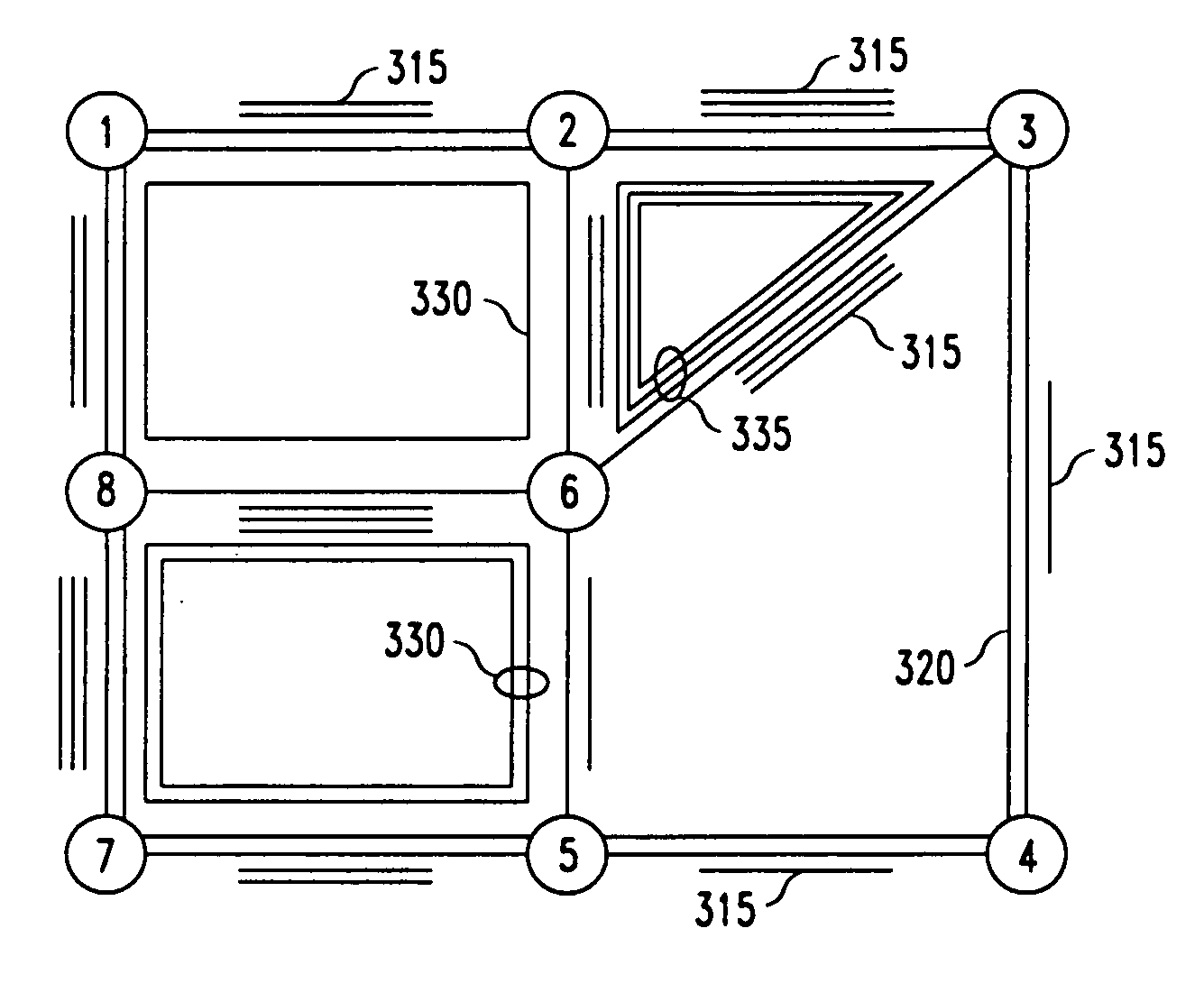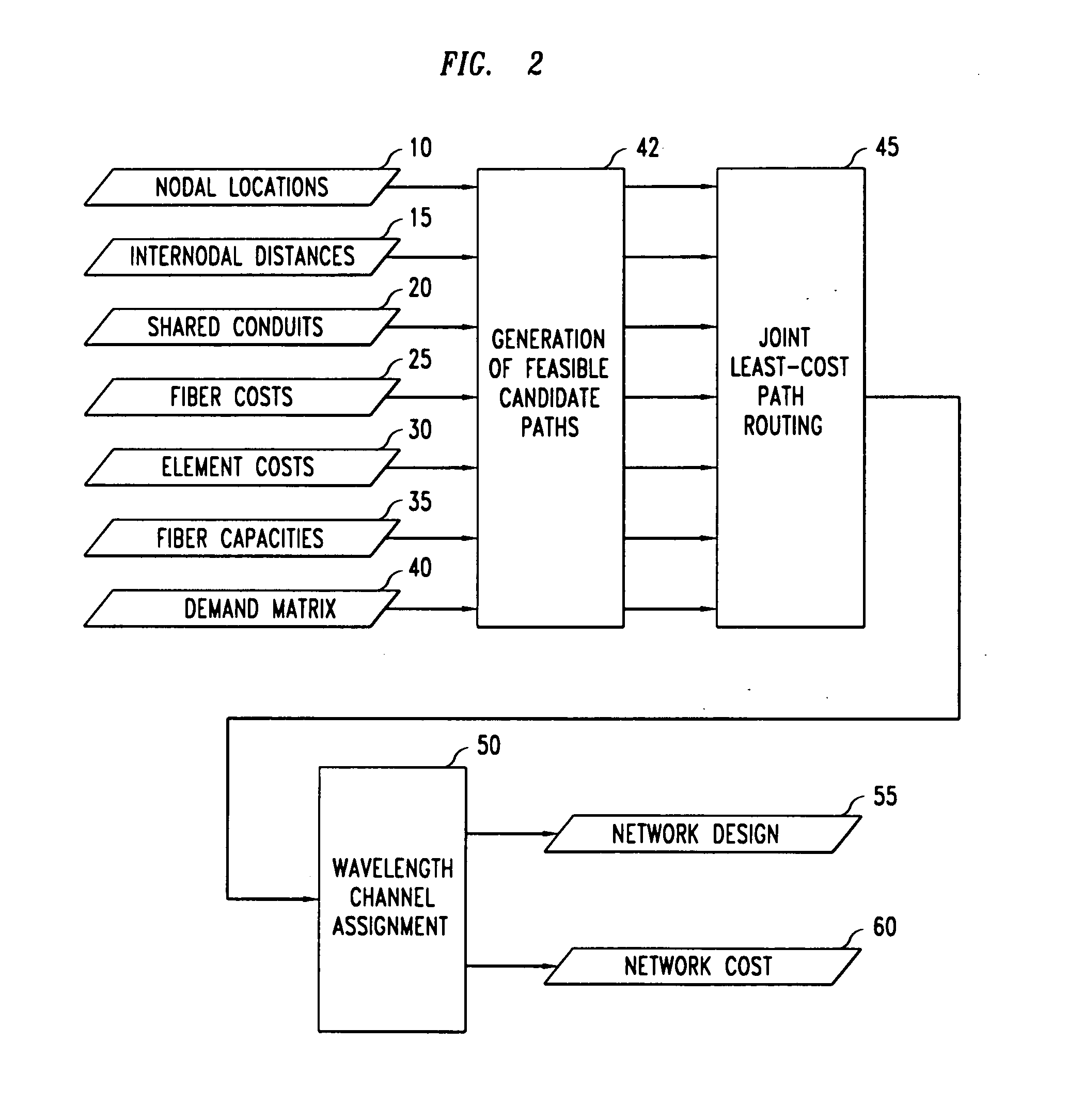Method for WDM optical networks including alternate routes for fault recovery
a fault recovery and optical network technology, applied in the field of methods for designing wdm optical networks, can solve problems such as substantial unused capacity, and achieve the effect of economic efficient network design
- Summary
- Abstract
- Description
- Claims
- Application Information
AI Technical Summary
Benefits of technology
Problems solved by technology
Method used
Image
Examples
Embodiment Construction
A. Dedicated Protection
[0023] An object of the present invention is to design networks in which each given demand has not only a working route from a source node to a destination node, but also a protection route that can be activated in case any link or node fails along the working route. In the Dedicated Protection strategy, which we describe first, a wavelength channel must be dedicated solely to the given demand on each link of the protection route. Preferably, the protection route should share neither links nor intermediate nodes with the working route. If sharing of nodes is unavoidable, then the working and protection routes should still be disjoint as to links.
[0024] In a broad aspect, our design procedure for a network having Dedicated Protection involves mapping traffic demands to selected pairs of routes that are at least link-disjoint, and preferably also node-disjoint. Thus, the network can recover from any failure of the working path by re-routing on the provisioned p...
PUM
| Property | Measurement | Unit |
|---|---|---|
| wavelength | aaaaa | aaaaa |
| flexibility | aaaaa | aaaaa |
| transmissions | aaaaa | aaaaa |
Abstract
Description
Claims
Application Information
 Login to View More
Login to View More - R&D
- Intellectual Property
- Life Sciences
- Materials
- Tech Scout
- Unparalleled Data Quality
- Higher Quality Content
- 60% Fewer Hallucinations
Browse by: Latest US Patents, China's latest patents, Technical Efficacy Thesaurus, Application Domain, Technology Topic, Popular Technical Reports.
© 2025 PatSnap. All rights reserved.Legal|Privacy policy|Modern Slavery Act Transparency Statement|Sitemap|About US| Contact US: help@patsnap.com



